The Article
LP5x Turntable From Audio-Technica
13th December 2019
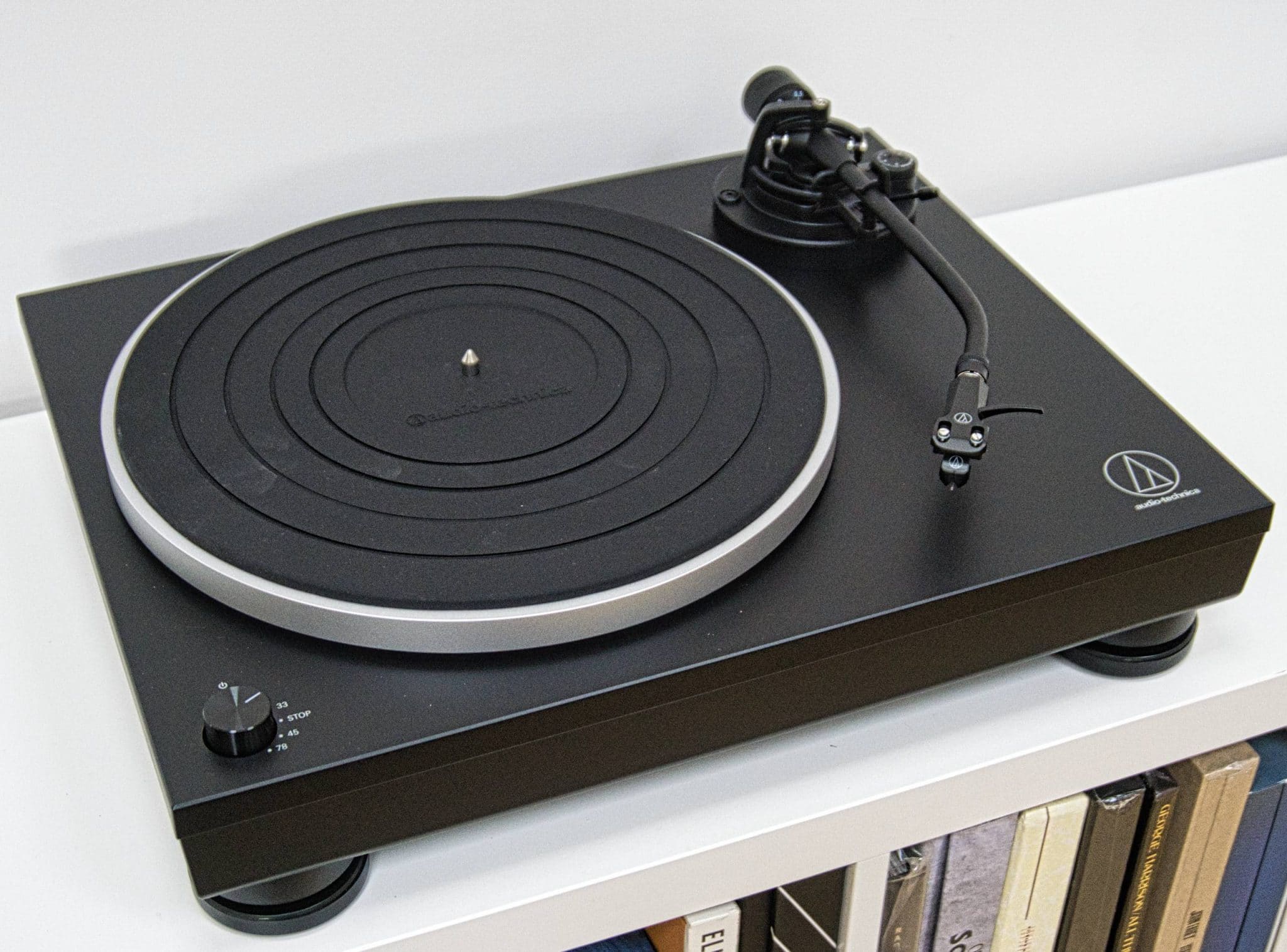
Aimed at budget users, the AT-LP5x, fully manual lifestyle turntable offers a host of built-in features
Having recently reviewed the company’s direct-drive AT-LP140XP turntable, pitched at almost the same price, I was intrigued to get my hands on the fully manual but also direct-drive LP5x. In many ways, this review of the LP5x is a sort of Part 2 to that earlier piece. The AT-LP5x is almost a companion, although its aimed at a different type of customer. There’s still a familiar DNA oozing from the seams here from both turntables. though.
Ever been burgled? Thoroughly burgled? Where your room has been all but emptied out by the rotters? Where the furniture has been carted off, all your ornaments and accessories nabbed and even the carpets rolled up and shouldered to a waiting Transit?
That’s what the AT-LP5x feels like in comparison to a AT-LP140XP.
Gone is the 140’s DJ furniture, missing is the 140’s strobe around the edge of the platter, while the relatively complex trio of power switch, speed switch and RPM selector on the 140 has been reduced to a single control on the AT-LP5x.
Effectively, the surface of the AT-LP5x plinth provides a single, rotating knob which infuses the deck with power and selects the speed (there’s three of those, including 78rpm). The J-shaped arm is the same, though. It features an anti-skate wheel, a SME-type headshell connector, arm lift and arm clip to keep the arm tube secure in case of accidental knocks.
The LP5x plinth is basically the same size as the 140’s in terms of length and width but the LP5x provides a deeper structure by around 1.5cm. Nevertheless, the LP5x’s plinth is lighter. The 140’s weighs in at 10kg, the LP5x’s at 7.3kg.
Part of the reason is that the 140 includes a large power supply, built into the chassis whereas the LP5x expels its power supply as a wall wart. This also means that the meaty IEC mains cable of the 140 is replaced by a weedy LP5x wall wart-type wire. This is not necessarily an issue – just ask Italy’s Gold Note which relies on a similar system. Then again, Gold Note spends serious cash on adapting the wall wart system for audiophile benefit. There’s no build budget for that sort of shenanigans here.
The LP5x features a basic aluminium platter which doesn’t look a patch on the 140’s rather swish design, while the latter is fitted with damping materials. The LP5x also has a horribly cheap rubber mat a-top instead of the better fabric mat of the 140.
But, hang on. If the LP5x does without in all of these things, why is it still priced at £350? Where has the money been spent, then?
The answer to that can be seen around the back. The LP5x is a lifestyle design and no mistake because the rear shows sockets for its built-in MM/MC phono amp (there’s none of that on the 140). The LP5x also offers a USB port (supporting up to 16bit/48kHz) for potential vinyl ripping (again, that’s missing on the 140).
Each Audio-Technica turntable is the sum of its build budget. Each was has been limited by the same and you can see where the priorities of both reside. The 140 prioritises its DJ tool use while the LP5x is a purely lifestyle affair.
Hanging off the end of the LP5x’s arm is a AT-HS6 headshell and a black AT-VM95E Dual Moving Magnet cartridge.
The included AT-VM95E replaces and improves upon the older, classic AT-95E which has been around the hi-fi firmament for decades. If you get the choice, I’d go for the former. Sound is improved and music sounds a little more sophisticated through the VM. More than that, you can upgrade the cartridge by swapping a better quality stylus into the host cartridge body. This means that, if you want to play 78s on the LP5x, you don’t have to change the entire cartridge. You only have to buy a new 78rpm stylus and insert that instead. Which saves you cash and set-up time on a wholly new cartridge.
Oh and before I forget, The turntable includes a dust cover, if required.
And before I move on. How does the LP5X compare to the LP5? The LP5X arrives with several changes over the vanilla LP5 including the integration of 78rpm for all of those shellac heroes out there plus the inclusion of the latest AT-VM95E cartridge, which replaces the venerable AT-95E. There’s a change of headshell too. The built-in power supply of the original has been kicked outside the plinth to a wall wart while the power switch is now integrated within the speed selector and the built-in phono amp adds a moving coil option (although, for a turntable of this class and price point, I wouldn’t bother with it – the LP5X is not up to MC standards). I do like the fact that Audio-Technica has put some distance between the USB and Phono Amp outputs which will help a it to reduce high frequency noise
SOUND QUALITY
To kick off the sound tests, I thought that a direct comparison with Audio-Technica’s own AT-LP140XP would be more than apt.
The internal LP5x phono amplifier is ok if your budget doesn’t stretch to an external model (the LP5x can handle both with a flick of a switch on the rear) and will do for now but upgrade to an external model as soon as you can to enhance sonics.
To compare the LP5x with the 140, though, I used the same external phono amplifier and played records by Ella Fitzgerald (Ella Sings Broadway) and Jethro Tull (Under Wraps).
During the review, I used the same AT-VM95E cartridge on both turntables. The 140’s bundled AT-XP3 cartridge is an ideal DJ tool but I’d recommend it be swapped over for a AT-VM95E to enhance sound quality. Hence, this little modification to the 140 is a route I’d highly recommend. Although, by adding the new cartridge, you’re now looking at a 140 turntable at just over £420, which needs to be born in mind, in the final analysis.
Playing Tull, I noted that the 140 offered tighter and deeper bass. Percussion and bass guitar provided more heft and mass. This has got a lot to do with the large power supply, the density of the 140’s plinth and the platter damping. Bass was also focused and precise.
That’s not to say that bass was absent from the LP5x. By no means. This is still a direct drive turntable, don’t forget. There was plenty of bass information flying around here and bass, from the LP5x, was certainly described well. Percussion and bass guitar were lifted or embossed from the rear of the soundstage, proving plenty of detail. The latter, actually, is where the LP5x scored over the 140. There was much more space around the midrange and treble which allowed detail to infuse the upper frequencies. Cymbal hits were tonally more complex, reverb tails extended further than the 140. A shy acoustic guitar on the Fitzgerald track was easy to track on the LP5x while the piano, which played a sort of rhythm guitar role on this song, was both richer in terms of information and more transparent via the LP5x.
Despite the inclusion of noisy (in high frequency terms) built-in phono amp and USB port, the fact that the LP5x does not have 57 varieties of DJ furniture on its plinth reduces even more high frequency noise and vibration. The result for the LP5x is a turntable offering greater clarity and character. OK, it doesn’t root itself into a wholly bass-lead foundation but, instead, it’s lighter on its feet and more reactive. The LP5x provides a better balanced suite of sonics than the 140.
In effect, as I write these words, the LP5x sounds a bit like Fluance’s RT83. So I decided to compare the two to see how much they compared. The Fluance is basically the same price as the LP5x but the Fluance does feature the superior Ortofon 2M Red but is the Red enough to blow the LP5x away?
If you flick back to my review of the 140, you’ll also find a comparison between the 140 and the RT83. The differences between the LP5x and the RT83, though, are no where near as great. With the LP5x in the seat, the picture is more complex because the LP5x brings far more information to the party than the 140.
Comparing the LP5x to the RT83, the RT83 does win out in some areas. The upper mids exhibit a great focus and precision. The transients are superior too. That is, the effect of a note starting and stopping. That portion of the sonic spectrum is more accurate from the RT83. The LP5x was able to land plenty of blows of its own, though. First, the LP5x was slightly more informative in the midband. While the LP5x lacked a little focus, its midrange was a touch more incisive, delivering slightly more information. The acoustic guitar on the Fitzgerald track was more characterful from the LP5x while the piano provided enhanced clarity.
On the Tull LP, the LP5x provided more control in the bass region and added refinement and complexity in the lower frequencies. In short, although the RT83 gave a tighter and more accurate account of the midrange, the LP5x was better balanced in terms of overall tonality providing great finesse and information.
CONCLUSION
Let’s put the LP5x in perspective. It’s a lifestyle turntable. It’s not a pure audiophile product. It can’t compete on pure sonic terms when faced with similarly priced competition from Rega and Pro-Ject but then the latter doesn’t offer a built-in phono amp or a USB ripping port and they’re both useless if your a direct drive fan. The LP5x provides all three. That’s the point of the LP5x. It caters for a particular vinyl fan. Someone looking for a combination of sound quality and convenience.
Don’t forget, if you wish, you can tweak the turntable too. Look to add damping underneath the platter, isolation feet under the plinth, a stabiliser over the spindle, a better platter mat, also think about Origin Live’s Cartridge Enabler and more over time, when you have the cash and you’ll experience improved sound each time.
If you are on a tight budget and you can’t immediately afford an external phono amplifier or – for space reasons – you’d rather use the internal model anyway, then the LP5x is ideal. If you want to rip your vinyl to digital files, the LP5x is ideal, if you like the idea of the hot-swapping headshell, the LP5x is ideal. If you like the stylus-upgrade notion from the cartridge, the LP5x is ideal. If you want a top class, low cost, quality direct drive turntable that provides an admirable tonal balance with confident bass to boot, the the LP5x is ideal. Get my drift?
AUDIO-TECHNICA LP5x TURNTABLE
Price: £349
Website: eu.audio-technica.com
GOOD: lifestyle facilities, balanced sound output, admirable midband detail, controlled bass
BAD: in lifestyle terms, nothing
RATING: 8
If you would like to purchase this turntable, you can from the following links:
USA – https://amzn.to/2GjC6yG
EUROPE: https://amzn.to/3mIeinz
[Don’t forget to check out my Facebook Group, The Audiophile Man: Hi-Fi & Music here: www.facebook.com/groups/theaudiophileman for exclusive postings, exclusive editorial and more!]
REFERENCE
Audio-Technica AT-LP140XP turntable
Fluance RT83
Ortofon 2M Red
Spendor S3/5R speakers
Tellurium Q cabling
Harmonic Resolution Systems Noise Reduction Components
All vinyl was cleaned using an Audio Desk’s Ultrasonic Pro Vinyl Cleaner

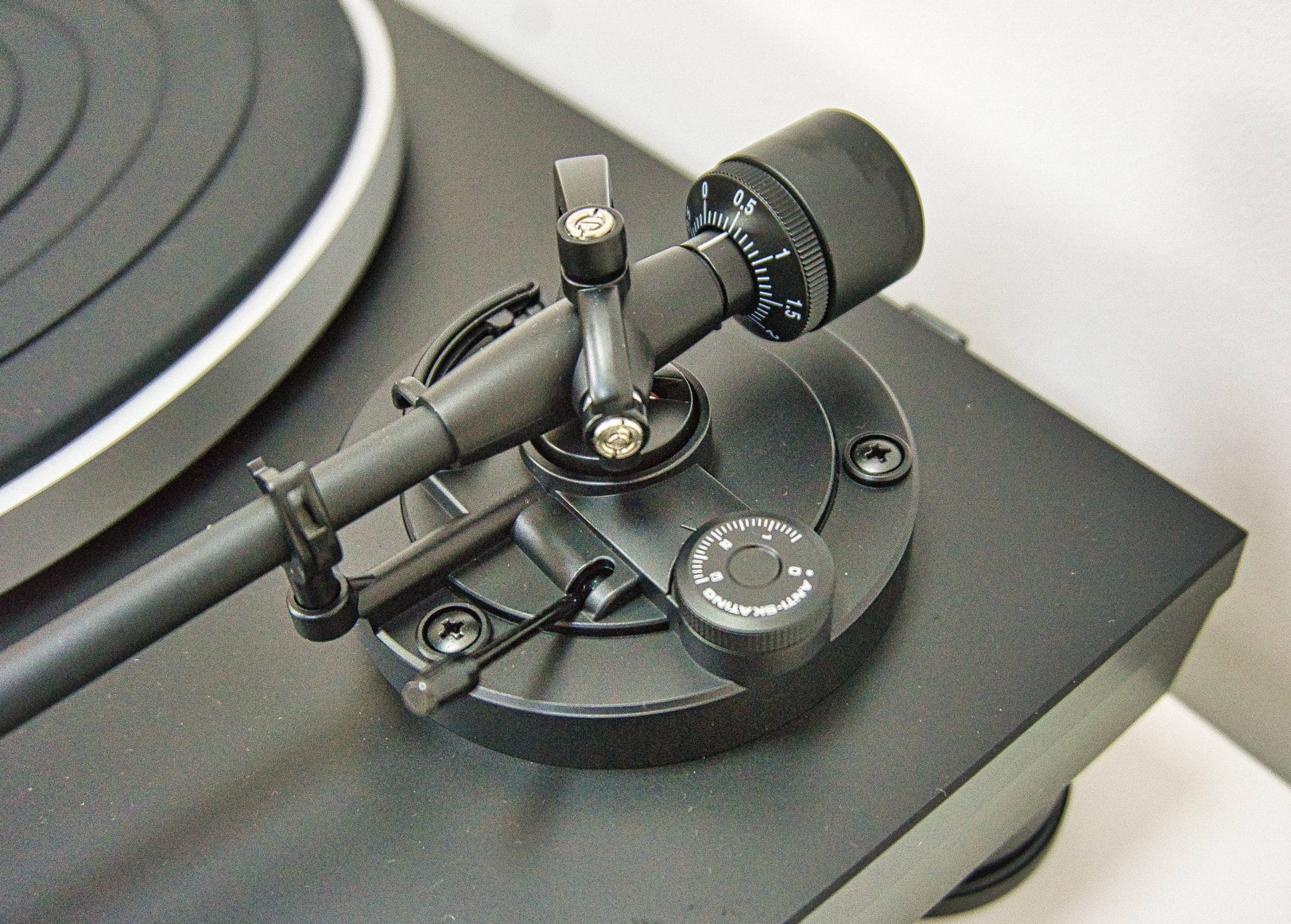
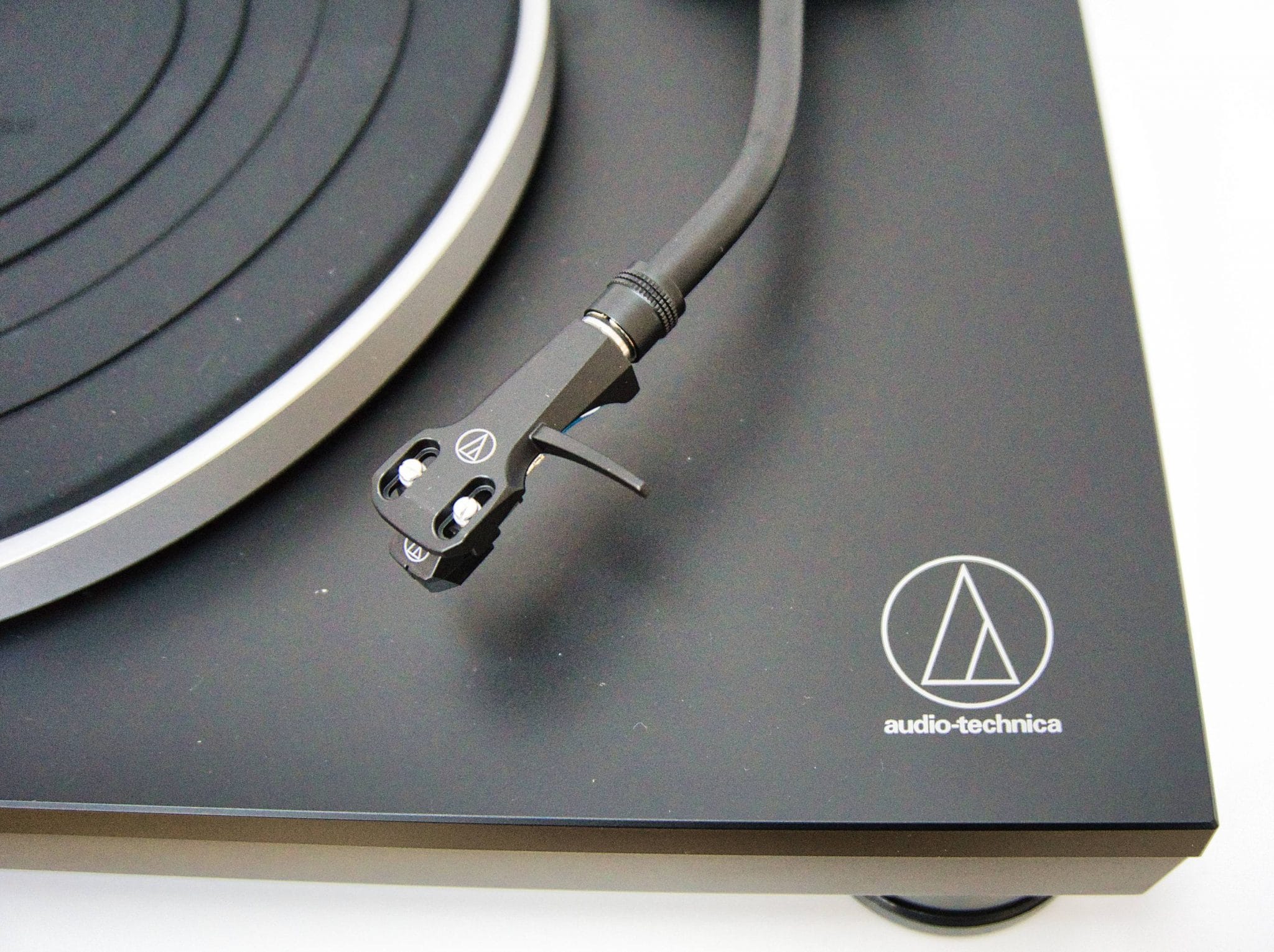
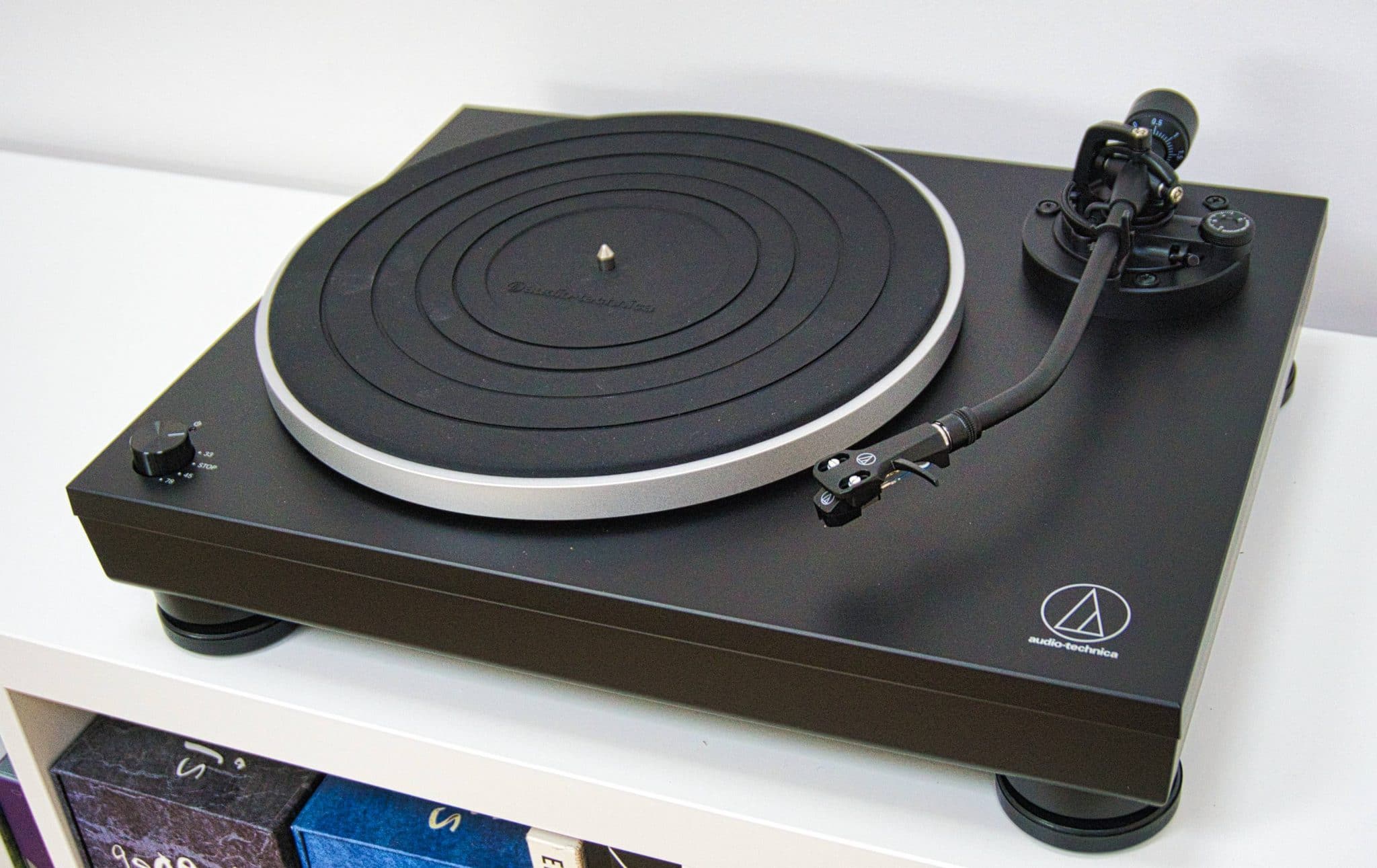
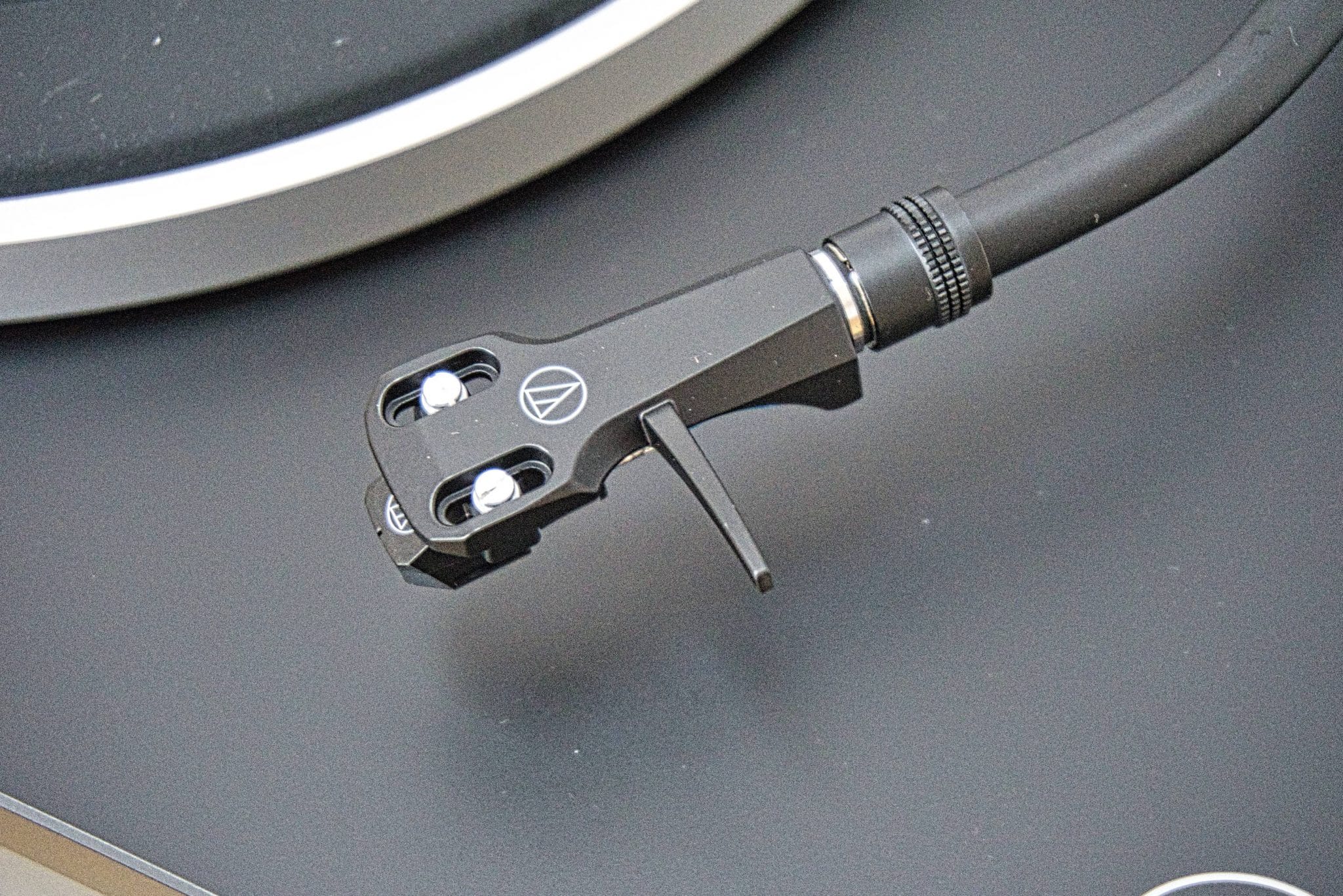
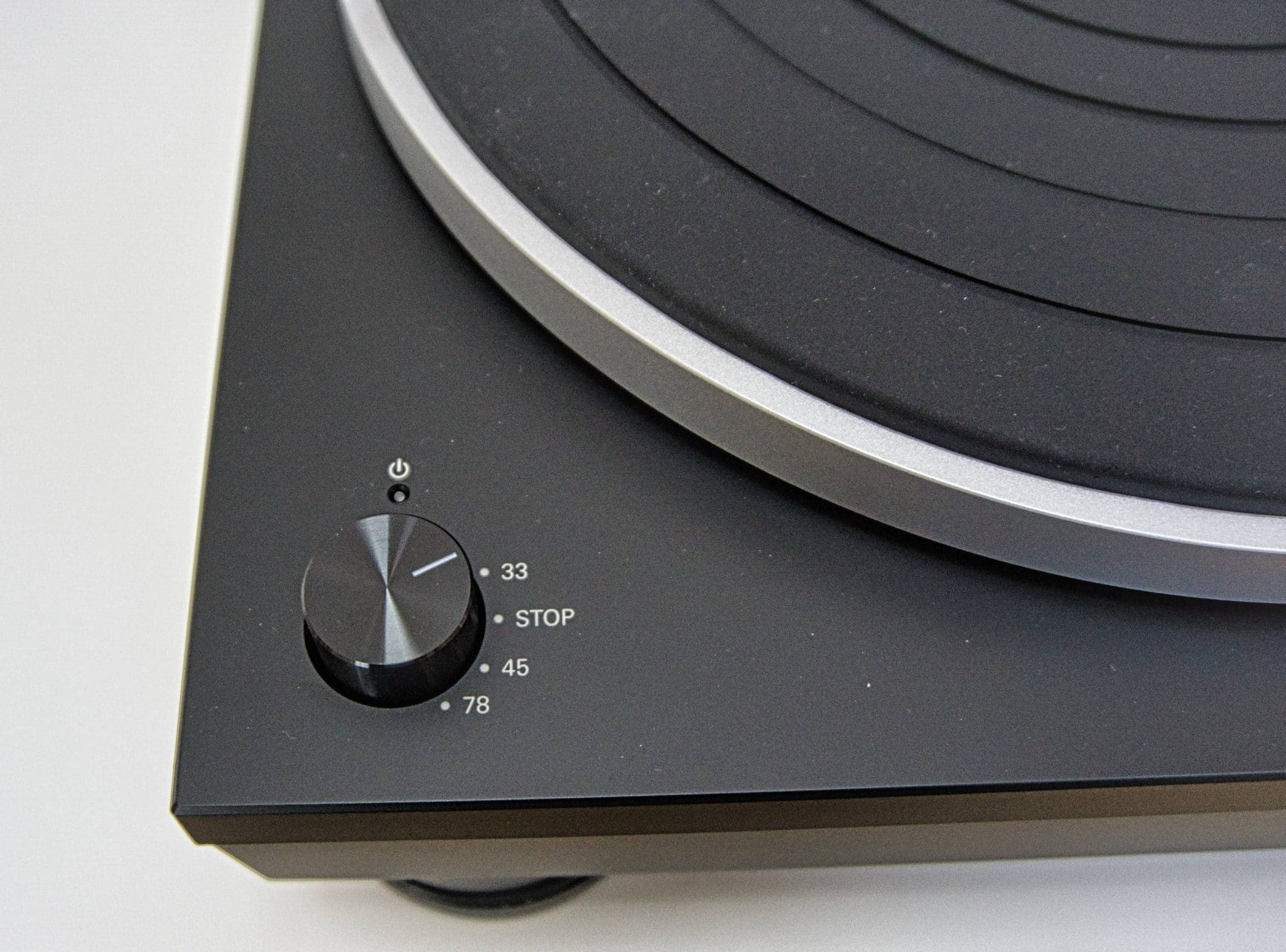


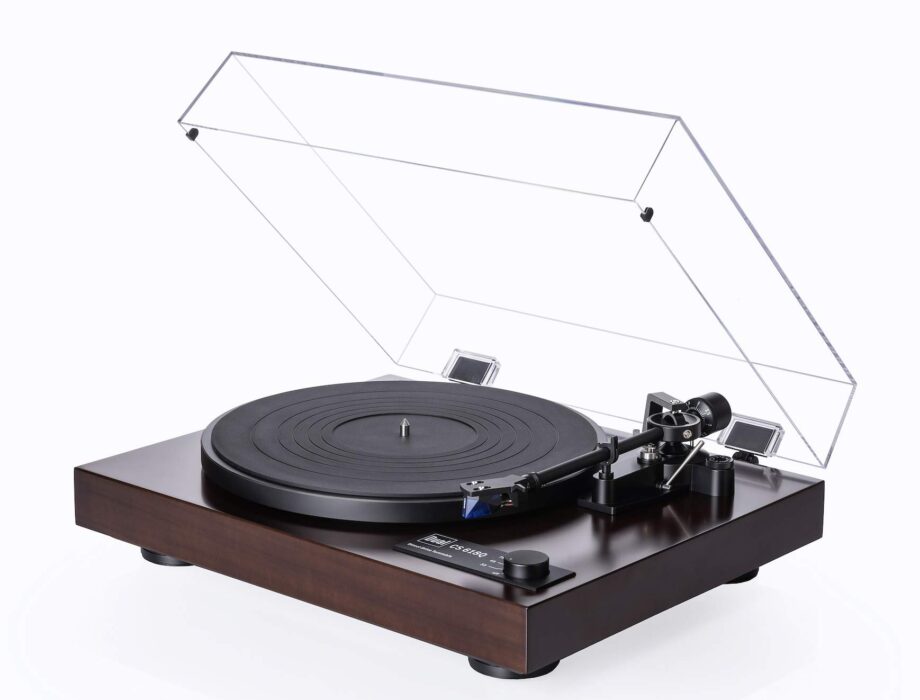
I’ve seen LP5x described as ‘having tremendous upgrade potential’. Do you reckon there’s any point to starting with it, then getting a decent external pre-amp, and eventually, proceeding with down the MC rabbit hole? Would you eventually go full Pimp My Ride on this one if, say, you were given it as a present?
Hi Anton – if MC is your ultimate aim then I’d save for a better quality turntable because you’ll need a superior arm to get the most from MC. For MM use, the LP5x is fine and will benefit from various mods, sure. An external phono amp is always a good idea too.
Thanks! I take it, the tonearm on LP5x is non-upgradeable?
If not, what player do you reckon I should start with, with a view to having fun upgrading it, if I’m firmly in the direct drive camp?
Indeed and even if it was then the arm would be too good for the rest of the turntable 🙂 For the other question? That depends on your budget, Anton.
I see LP5x, then a huge gap, then things like SL-1500 for £1,300 or so. Is there nothing direct-driven between those two price points?
The Funk Firm Gett! (exclamation mark included), NAD 588, Pro-Ject RPM3, Gold Note Valore Lite, Michell Tecnodec, etc.
>>The Funk Firm Gett! (exclamation mark included), NAD 588, Pro-Ject RPM3, Gold Note Valore Lite, Michell Tecnodec, etc.
Swell! Where do you think the MC limit lies with these models, as well as Turn 5?
Hi Anton – it depends on your budget and priorities in terms of your overall hifi. Rough guide? No more than the cost of the turntable itself. As I say though, a case by case approach is preferable.
Hi Paul. I really appreciate your reviews. Very informative and enjoyable. Just to kind of piggyback a bit on Anton’s comments, I am also looking for a Direct Drive Turntable. The AT-LP5X sounds like a very solid option but as Anton was asking, do you have any recommendations for a Direct Drive table that would be the next step up? Something that would fall in that $500-$1000 range. The AT-LP5X is going for about $399 in the US. I noticed the ones you had mentioned were all belt driven. I am upgrading from an AT-LP120 USB and was not sure how much of a jump the AT-LP5X would really be and was therefore looking or something maybe a bit better. I have really been tempted by some of the Belt Driven options you have reviewed like the Debut Carbon Evo, the Nad tables, Funk Gett!, etc. but really wanted to see if there were some comparable Direct Drive tables before making a purchase. Thanks so much for your input.
Direct Drive turntables tend – in my experience – to gather around the budget area below ¬£500 and then up in the heights around ¬£10k with Technics floating in the middle. There’s many Technics fans out there and the brand has a lot going for it but, for me, I wouldn’t buy and use one ‘as is’. I’d have to spend money on it (I’m talking about both the older original models and the newer releases). So, one option is to buy a 1200 cheap and talk to someone like Origin Live which has a host of mods that can be applied when you can afford it, to steadily enhance the sound. If you need links, give me a shout and Ill go look.
Paul, thank you very much for taking the time to respond. From what I gather in this discussion and previous ones that I have read, if looking for a new turntable in that 500-1000 range, it seems that belt driven is the substantially better option in terms of sound quality? From a personal standpoint I am not really comfortable enough evaluating the condition of a used turntable (like an old Technics) and discerning whether or not it would be a wise purchase. So it seems I might need to get out of my comfort zone with the direct drive tables and branch out to belt driven. I do not want to take up too much more of your time but one last inquiry if you do not mind. I know you have reviewed (in this review) the AT-LP5X and the Reloop Turn 5 favorably. Also right between those two price wise is the Pioneer PLX-1000. They seem like decent options but in your opinion would they be a significant upgrade over what I currently have (The AT-LP120 USB)? or as I suspect, in order to get a true upgrade I would either need to spend a significant sum for a direct drive (like you mentioned above) or stay in this price range and move to a belt driven table? Thank you again.
Hi Kevin Рthe problem with many commercial belt drives is that you need a level of component quality for them to work successfully. The Pro-Ject Primary E has that for around £180 but it removes lifestyle-related features to concentrate on the core components.
Most similarly-priced, Chinese-built turntables don’t do that. They insist on populating their decks with features because they think they need them to sell their products. Hence, essential components like the tonearm loses out because there’s only so much money in the kitty and the manufacturers want to bring in an internal phono map, USB port, etc. So they install a cheaper, lower performing tonearm to enable them to hit the targeted price point.
The quality tends to be low here which means that the sound suffers.
Such designs featuring a direct drive motor sound better. They elevate the poor sound to something more acceptable. Mainly because direct drive motors are harder to cock up, frankly.
Once you get to a level of component quality, though, belt drive turntables flourish. It depends on where that budget is spent, though. The Rega Planar 1 is priced at what £275 now? Yet it dumps the feature set to concentrate upon sound only. So it sounds great at that price.
Low cost turntables are *all* compromised, therefore. The sound quality pivots around component choice and how you spend your build budget.
Once you soar over the ¬£500 mark then I would recommend a belt drive for an out-of-the-box purchase. Something like a Pro-Ject EVO or NAD C558 or C588 or Rega Planar 3 of Funk Firm Gett! or…well there’s a host of options.
Over £500, I personally think (and many will completely disagree with me) that direct drive motors infuse too much energy into their plinth, platters and arms because the drives produce too much torque, which veils fine detail. The now improved general component quality elsewhere now highlights this issue. This is one reason why all, great sounding, high-end direct drive turntables offer low torque motor designs.
That said, many swear by the direct-drive sound from designs priced over ¬£500 so don’t let me put you off if you’re determined 🙂 The point of music is to enjoy yourself, after all. I’m only here to advise.
Hi Paul. Thanks so much for that detailed and fantastic response. Your input and wisdom are very much appreciated. Everything you said makes a great deal of sense. Really at the end of the day I am more after great sound than convenience and I am looking to get the best bang for my buck. It really sounds like for my price range that means going with a belt driven turntable. The AT-LP120 is what I have had for years so I just have accessories (like a heavy AT record weight) that compliment a direct drive turntable and that was sort of what brought me back to vinyl, so there is a bit of a comfort zone. However, comfort zones are meant to be broken! Thanks for taking the time to give such thorough and thought out answers. It has been a tremendous help and will definitely give me a few turntables to really focus on. The Funk Firm Gett! seems a bit tough to find in the US but there is something so appealing about that turntable. I have seen both the NAD C558 and C588 though and the Regas and the EVO are readily available, Take care Paul and thanks again.
No problem, Kevin and good luck on your choice.
Hello Paul,
Thank you for your comparative review. I own three units of the AT-LP140XP; every time I’m tempted to buy a new turntable I return to the same model because it does everything I want it to, full stop, considering the IEC power plug socket, the DJ controls and lights, the voltage jumper switch, and the ability for it to use elliptical and microlinear stylii. I wondered about the AT-LP5x given that the appearance, price, and basic specifications are more or less similar to those of the AT-LP140XP. After reading your review, I might again buy a LP140XP because of its DJ features and solid build but I now know more about the sonic performance of the LP5x and might just go that way in the end too this time around given it also looks nice, has a direct-drive motor, has adjustable counterweight and anti-skid controls, and from the manufacturer, uses the AT-HS6 headshell as does the LP140XP. Cheers, Shaun.
Hello Paul,
I need your advice! I’m gonna take the LP5X for now, and want to use the external phono pre-amp (that I dint habe it for now).
So, what phono pre-amp do you recommend? My budget are around $100 -$150.
Are those range amount of phono pre-amp bring me a better sound?
Or do I need to increase my budget to get a better result with more expensive phono pre-amp?
Thats all I want to know according to your opinions.
Thankyou and waiting for your advice!
Hi Eric – grab a Schitt Mani 2 – sorted! I have a review on this site, if you need to check that out: https://theaudiophileman.com/mani-2-phono-amp-from-schiit/
Hi Paul,
Thanks for antoher great review. Can I ask you for help?
I am looking to buy mine first turntable. I looked at lot of your reviews and I have narrow it down to two, LP5x and Rega Planar 1 plus. Which one of those two would be a better choise in your opinion? I am intrested in which one of the two has better sound quality?
Thnak you in advance.
I would go for the LP5x because I dislike the whole phono amplifier implementation in the Rega. Have you read my review here? Well, for both decks actually.
Hi Paul,
I recently came across your website and YouTube channel when researching what turntable to buy next and have a quick question.
I currently have a AT LP-60 and currently thinking of upgrading to the LP5x. Do you think this is a worthwhile upgrade also are there any other turntables around the same price point I should be looking at? I’ve really enjoyed the LP 60 so I’m very tempted to stick with the same brand and get the LP5x
Your reviews have been some of best I’ve seen whilst researching what to buy. Thanks, keep up the good work.
Hi Jonny – yes, the LP5x is an improvement. There’s plenty of other options, sure. Plumping for any of them depends on your budget though. And thanks for the kind words.
Thank you for your reply.
I’m torn between the X5 and the PRO-JECT DEBUT EVO which would be at the top end of my budget.
Both turntables seem to have great sound, a good cartridge and upgradable so I’m finding hard to decide which one would be better for longevity?
Thanks.
Do you mean the 5x? The EVO is the better of the two. It also offers great upgrades potential to lift it towards a £1k turntable sound when finds allow. I have a feature/video covering those upgrades on this site.
Thanks for that nice review and detaiiled comparison. I have the belt driven Audio Technica AT-LPW 30 TK turntable which I have now upgraded from VM 95C to VM 95ML. I can really hear the difference in sound although the ML has only played for a few hours. My TT is onnected to the pre of my Yamaha A-S 1000. The phono pre of my amp is 320 pf whilst the AT VM styluses need 200 pf for best performance. Don’t misunderstand me, it sounds really nice this way, but would your requested Shiit Mani 2 therefore be a significant upgrade? And do you think the 5X would make a sonic difference together with the ML cart in comparison to my LPW 30 with ML cart – or do you think it would be more a sideways move and that i have to go much higher pricewise (Technics 1500 C / Magnat MTT 990 / Rega Planar 3 RS) to experience a better sound?
Thanks a lot for your input.
Regards
Matt
Yes, Matt. The Mani would be a recommended upgrade. And a yes on the 5x too. And also a yes on the more expensive options too, if you can afford any of those turntables. 🙂